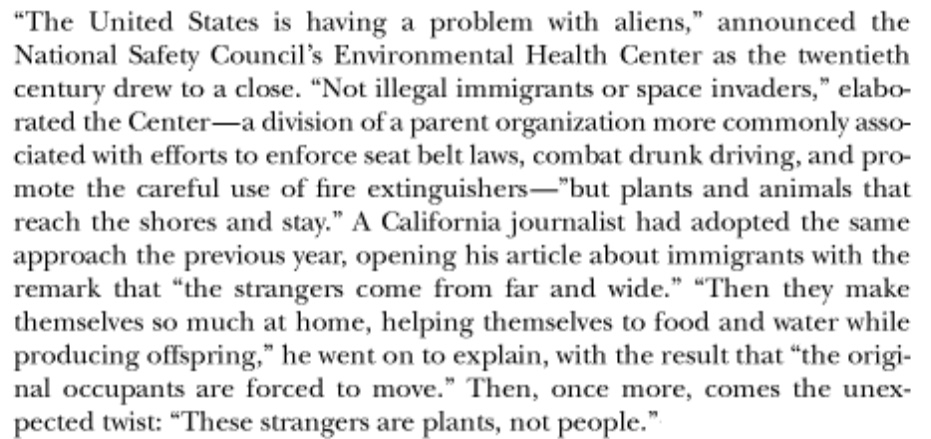
 The beginning of Peter Coates’ classic American Perceptions of Immigrant and Invasive Species: Strangers on the Land dares to reveal the never-challenged assumptions about humans and other forms of animals in our world. Political correctness always works best when it’s invisible.
The beginning of Peter Coates’ classic American Perceptions of Immigrant and Invasive Species: Strangers on the Land dares to reveal the never-challenged assumptions about humans and other forms of animals in our world. Political correctness always works best when it’s invisible.
Few probably read my post last August when I mentioned that “It’s brick wall time when we cross the border between people and the rest of the animal kingdom. Most of our morals and values no longer hold on principle.” A front-page article in today’s Rapid City Journal about invasive species in South Dakota reminds us of how we instinctively compartmentalize truths which might otherwise help us to understand social problems that grind-on day after day without fresh insights.
Even so, a Smithsonian article once asked “Are Humans an Invasive Species?” Included was a definition of invasive species with language that almost begged us to acknowledge that people should be compared to other animals: “animals, plants or other organisms introduced by man into places out of their natural range of distribution, where they become established and disperse, generating a negative impact on the local ecosystem and species.”
The author, Sarah Zielinski, broke from our silence to assert that “we can pull from these definitions some general aspects of an invasive species and apply those to Homo sapiens”:
1) An invasive species is widespread: Humans, which can be found on every continent, floating on every ocean and even circling the skies above certainly meet this aspect of invasiveness.
2) An invasive species has to be a non-native: Humans had colonized every continent but Antarctica by about 15,000 years ago. Sure, we’ve done some rearranging of populations since then and had an explosion in population size, but we’re a native species.
3) An invasive species is introduced to a new habitat: Humans move themselves; there is no outside entity facilitating their spread.
4) An invasive species had adverse effects on its new habitat and/or on human health: Humans meet this part of the definition in too many ways to count.
Perhaps a working-class trucker from Hungary who filmed immigrants walking into England had the right idea: forget about any academic approaches like those of Peter Coates. Just use cheap hidden video technology to document what’s happening. At least there’ll be an audience.

